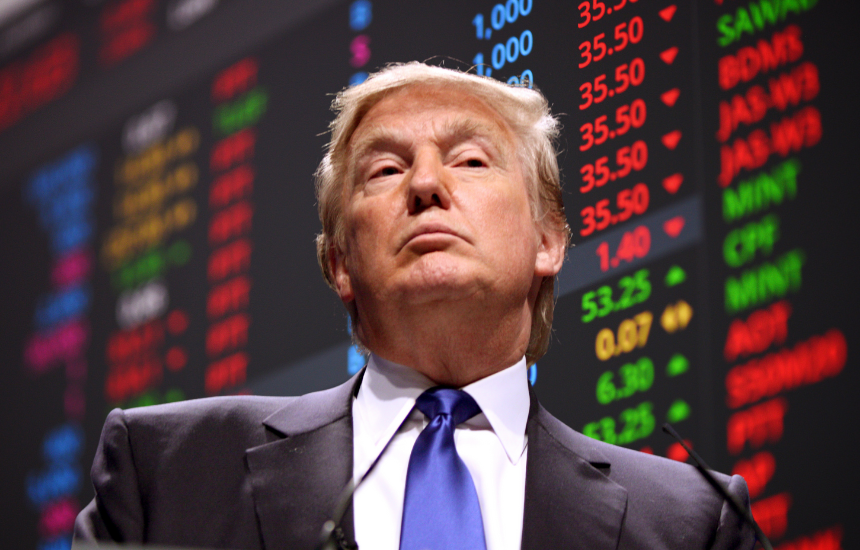On April 2, named “Liberation Day” by Donald Trump’s administration, a universal tariff of 10% against 90 countries was announced to go into effect in three days. This was combined with reciprocal tariffs on over 60 countries, which included a 34% tariff on China and a 26% tariff on India. Trump imposed this with the aim of bolstering American businesses by decreasing the trade deficit. However, when the tariffs went into effect, the stock markets and economy faced an extreme shock.
Tariffs are a tax on goods imported from other countries into the United States. This leads to an increase in the cost to import goods or resources necessary for manufacturing, and to offset this, companies will often raise prices that consumers must pay. As a result, regular citizens and smaller companies are the most affected by tariffs.
Katie Tran, a Huntington Beach High School (HBHS) senior, said, “As an artist, I produce my goods through a Chinese manufacturer, so I am directly affected by tariffs that double the cost of production. Additionally, my hobby includes collecting both official and fan-made merchandise from my favorite franchises, and I have witnessed the increased costs firsthand.”
In addition to prices being affected, the stock market also experienced a great downturn. This was most apparent through the three main indexes that the US uses to track the state of the stock market: the Dow Jones Industrial Average (DJIA), the Standard and Poor’s 500 (S&P 500) and the Nasdaq Composite Index. The DJIA is a stock market index of the 30 largest companies on the US stock market, while the S&P 500 tracks 500 of the top US companies. The Nasdaq gives a wider view of the stock market, indexing all stocks traded on Nasdaq’s stock exchange.
All three of these indices plummeted after these tariffs were put into effect, indicating a drastic decrease in the stock value of nearly every US business on the market. The S&P 500 dropped 10 percent in three days, whereas normally it changes about one percent in a day. Similarly, the Dow Jones and Nasdaq dropped by 9.3 percent and 11.4 percent, respectively, in two days. All of this occurred within a week of “Liberation Day.”
HBHS senior Lynh Tran said, “All of these tariffs have been added, and now we’re having to deal with all their issues without knowing how to combat them ourselves.”
Due to the great backlash against Trump’s tariffs from both foreign and domestic interests, his administration put all reciprocal tariffs on a 90 day pause starting on April 9, except for China, whose rate instead increased to 145%. Since then, tensions on the stock market have eased, allowing them to bounce back to relatively normal levels. After about a month since Liberation Day, the Dow closed after an increase of 2.81%, the S&P gained 3.26% and the Nasdaq rose by 4.35%.
While this pause initially gave other countries time to negotiate better rates, recently, the future of tariffs has become even more unclear as the Trump administration is under legal fire for their actions. On May 28, the US Court of International Trade invalidated all of his reciprocal tariffs, stating that Trump is overstepping his authority. However, only a day later, an appeals court reinstated the tariffs temporarily. This battle is likely to be heard by the Supreme Court for a final decision, which could greatly bolster or check presidential power.








